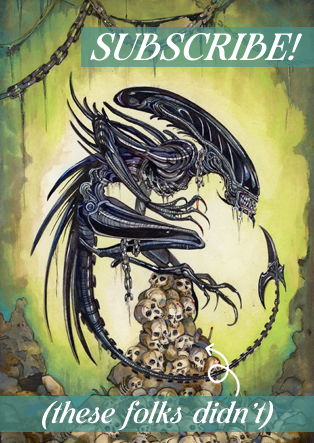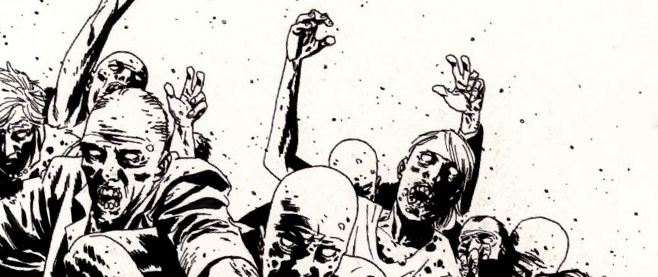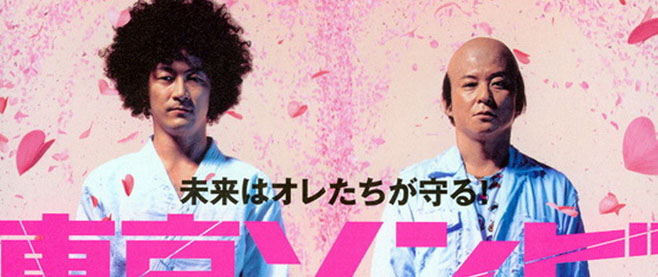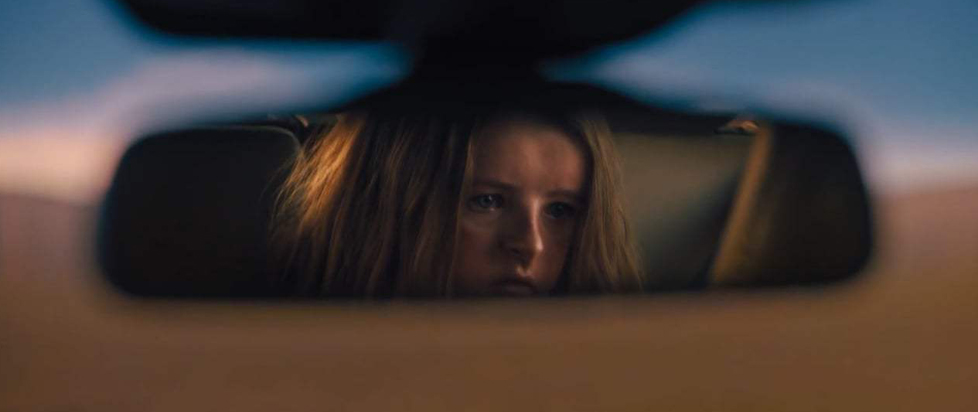
The Shape of the Devil
Midway through Hereditary, there is a twist that that is so unexpected, gruesome and tastelessly tragic that it’s not just horrifying or disgusting – it feels like a violation. The film’s creepy poster child, Charlie, suffers an anaphylactic shock. As her brother Peter speeds her to the hospital, she leans out the window in an effort to breath. Swerving to avoid a deer carcass in the middle of the road, Peter clips too close to a telephone pole, and Charlie’s head is torn from her body.
Hereditary follows many great horror films in exploiting the discomfort and pain of a fucked-up family to create fear and tension in its audience. It creates a more potent, intimate and upsetting style of horror all its own, though, by carefully disregarding some horror tropes while embracing others. Nowhere is this more effective than in the film’s treatment of gender. The film twists gendered expectations, using gender as a tool to contribute to its disorienting, unsettling atmosphere. Many of these inversions are facilitated by its choice of supernatural threat.
The film’s plot revolves around the cult in which the late Ellen Leigh, mother/mother-in-law/grandmother to the family we follow, held some sort of leadership role. The cult worships Paimon, a demon traditionally represented as a male figure with a female face. Ellen and the cultists seek to give Paimon a corporeal form to possess — a text briefly seen on screen describes him as “covetous” of a male body in particular — but their luck is troubled: Ellen’s son, Charles, whom she first attempted to make a vessel, commits suicide; Ellen’s daughter Annie cuts her firstborn son off from his grandmother; and so she “stabs her hooks into” Annie’s daughter Charlie. But Charlie is female, insufficient. Her death allows Paimon to move into Peter’s body: a female head, a male body.
 It’s interesting to view Paimon as a sort of transmasculine figure. Though there are a few moments — Charlie mentioning that Ellen wanted her to be a boy, a shot of Peter’s face smeared and distorted by a stained glass window— that resonate as potentially expressive of trans or queer experience, it’s probably irresponsible and incorrect to claim that Paimon is serious trans representation. Paimon’s gendered overtones are better viewed as auxiliary elements that reinforce the themes and resonances director Ari Aster builds.
It’s interesting to view Paimon as a sort of transmasculine figure. Though there are a few moments — Charlie mentioning that Ellen wanted her to be a boy, a shot of Peter’s face smeared and distorted by a stained glass window— that resonate as potentially expressive of trans or queer experience, it’s probably irresponsible and incorrect to claim that Paimon is serious trans representation. Paimon’s gendered overtones are better viewed as auxiliary elements that reinforce the themes and resonances director Ari Aster builds.
The queer-coding of evil is well-documented; villains, particularly in children’s media or common stories, tend towards the flamboyant and strange, especially in contrast to the straitlaced and wholesome figures cut by their protagonists. A similar line of analysis describes traditionally female villains — witches and wicked stepmothers — as an expression of a fear of female autonomy and sexuality. That which does not conform to a cishet, patriarchal framework is dangerous, alien, unsettling, frightening. In her landmark work The Devil in the Shape of a Woman, which analyzes the hysteria and litigation of witchcraft in colonial New England, Carol F. Karlsen describes the cultural specter of witchcraft as an “ambivalent but violent struggle against women.” Casting a feminine or queer lens on the doing of evil serves to reinforce the power structures of the status quo. Christine Prevas writes in a 2017 piece on Disney’s particularly egregious queer-coding of villainy for Rogues Portal that “stemming from the Ancient Greek tradition that outer beauty corresponds to inner goodness, these stories have always functioned on the implication that the beautiful ingenue is ‘good’ and that those who do what society condemns … are ugly. Are monstrous.”
The queering of the demon — Paimon, the being who longs to move from a female body to a male one — bears a complicated relationship to the typical queer-coding of villains. The film is careful not to even invite us to view its victims and protagonists as good or beautiful, instead emphasizing their bad and ugly traits in a deeply affecting portrayal of a family in crisis. Prevas describes these queer-coded villains as those who “do what society condemns,” not simply those who are. This distinction is important because acts of sexuality form the root fear behind the threats queer and female villains pose — Paimon is specifically coded as transmasculine, and — unless we want to interpret the possession of a body as a penetrative/sexual action — there are no countercultural actions the demon performs. It is simply his being that is queer, that is “wrong.” By removing the societal/psychological fear of contra-patriarchal deed, Aster creates a variation on the gendered/queered villain that better fits his world’s simmering dread and uncanny wrongness.
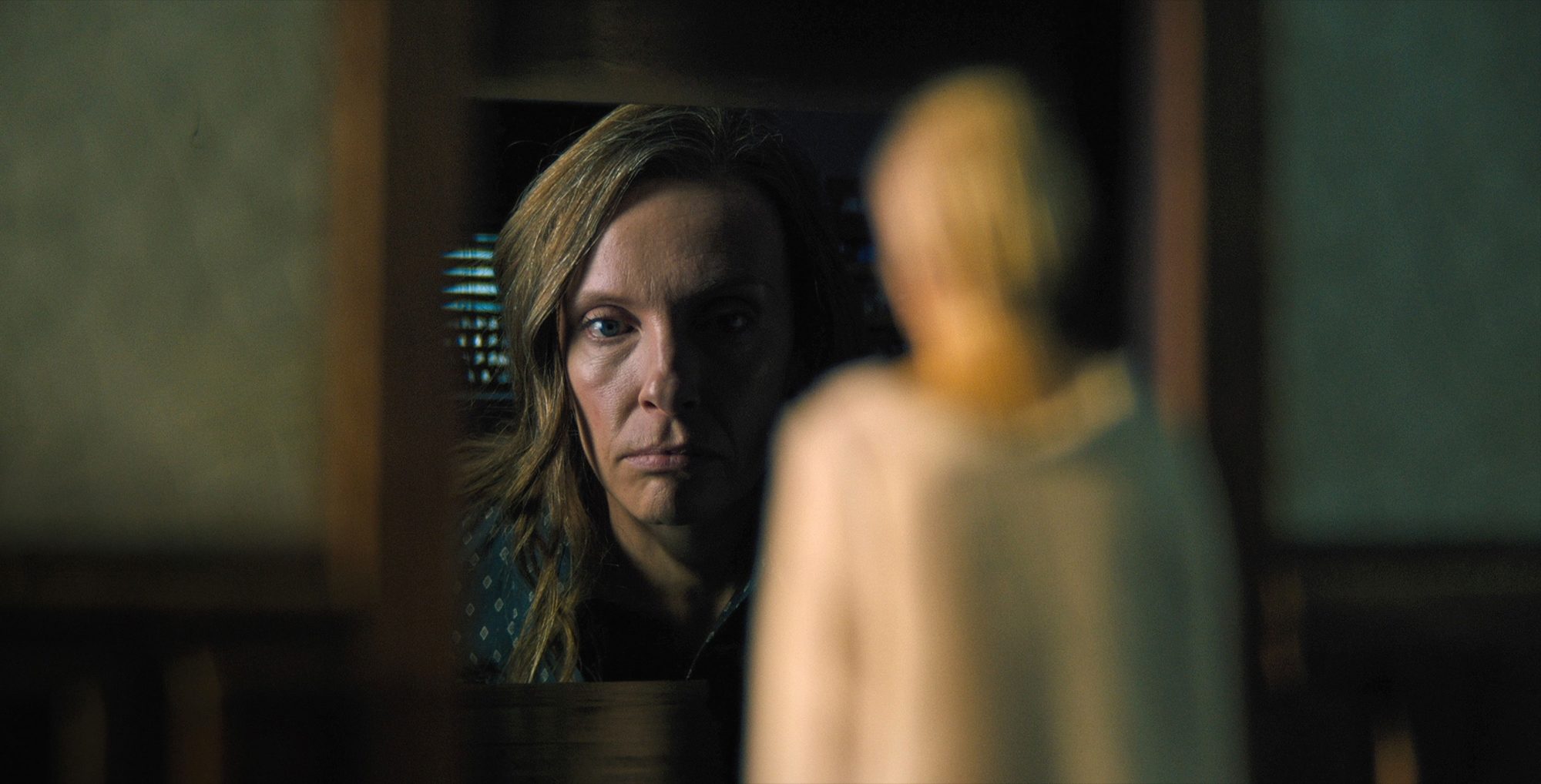
Occupation of and thriving in liminal spaces is a queer trait. Several moments in the film thrive on liminality — the motif/plot device of welcome mats, the front steps outside the group therapy session, open car doors and windows and the open walls of Annie’s miniatures, the moments of hesitation at the attic ladder — but Hereditary’s direction eschews slow transitions; one of the film’s best shots is a direct jump from the house at night to the house in day. There is a similar transition for two shots of Peter. This connects to Paimon’s transition into a male body; unlike an actual trans person, he simply jumps from an unsatisfying body into an ideal one. The frustrating imbetweenness that characterizes queer and trans experience is entirely lacking, making Paimon’s queer traits jarring and unrepresentative: more firmly alien, more unsettling, more malicious. A recent trend — The Shape of Water, the meme describing the Babadook as a gay icon, even Maleficent’s or Wicked’s reimagining of villains’ stories — has reclaimed this trope of monster-queering, turning the queer-coding into not simply a signpost reading “FEAR AND DISTRUST THIS,” but into a complicating aspect of the monsters’ character, something to sympathize with. Aster effectively ducks that trend by making Paimon’s queer-coded traits unsympathetic: Paimon’s transmasculinity serves both to decorate the film’s villain in the trappings of typical horror threats and to alienate a potentially sympathetic audience from him.
Beyond Paimon himself, the film also makes use of a handful of gendered horror tropes with clever twists. There is the sacrifice of a virgin girl to enable the rise of a demon, though it is not because he wants her body, it is because he doesn’t. Where films like The Shining use full-frontal female nudity to create confrontational visual unease and fear, Hereditary uses a similar technique, but it’s that rare film to show a penis. The mother who loses her mind and becomes a threat to her children is a common trope, and Annie fulfills it with aplomb, thanks to Toni Colette’s incredible performance.
The film also directly invokes a famous cycle of Greek tragedies, the Oresteia. Briefly mentioned during one of Peter’s classes, it tells the story of Agamemnon, who is forced by the gods to sacrifice his daughter Iphigenia in order to be allowed to sail to Troy and to war. Enraged by the death of her daughter, Agamemnon’s wife Clytemnestra murders him when he returns home, in response to which their son Orestes kills his mother. The allusion to this story brings many interesting parallels into consideration. An explosive dinner conversation in which Peter and Annie accuse each other of fault in Charlie’s death echoes the cycle of vengeance in the Oresteia, and the fact that neither one makes any amends recalls the strong sense of justice and vindication each murderer in the Greek tragedies feels. Here, though, instead of outright cathartic violence, there is simmering unsatisfying bitterness, a similar transformation to Paimon’s passive queer-coding. Annie nearly kills her children a few times — the sleepwalking paint-thinner incident, her secret attempted miscarriage; she also, in throwing an apparently possessed sketchbook into the fire, kills her husband. She becomes both the Agamemnon figure and the Clytemnestra. And in one retelling of this cycle of myths by the tragedian Euripides, when Iphigenia is sacrificed, at the last minute the gods spirit her away and replace her with a deer. In a characteristic and chilling twist of the allusion, it is the body of a deer that leads to Charlie’s death.

The Oresteia contains interesting gendered politics; the cycle of avengings happens to fall across gender lines, with son killing mother to avenge father, whom mother killed to avenge daughter. Steve’s warning to Annie that he has “a son to protect” echoes this — but as with the other comparisons to Greek tragedy and the use of queer-coding, it is muted from action to mere feeling; it becomes less frenetic to watch and more impactful to the audience. The conclusion of the Oresteia shows Athena (herself a figure of ambivalent gender, being born from a male body, and holding patronage over both typically male topics like military strategy and traditional female pursuits weaving) resolving the cycle of vengeance, choosing to spare Orestes rather than punish him for the crime of matricide. This is a synthesizing conclusion that resolves not just the plot issues but also the gendered tensions of the myth cycle. Hereditary’s conclusion functions similarly in resolving plot and dissolving gender issues: Paimon, male spirit, is given the body he desires by the female-led cult through a matrilineal slaughter executed by a coed cult led by women. Careful allusion to the Oresteia allows Hereditary to use gender more potently and to deepen its exploration of guilt and blame.
Though there are definite supernatural occurrences in the film — strange blue energy, levitations, apparitions and voices and movements and flames — it’s unclear whether the attempt to conjure Paimon into Peter’s body actually succeeds. The film’s first and final shots, as well as several throughout, cast the setting as a miniature, perhaps implying that what we are seeing is all in the troubled, grieving, and sick mind of Annie, the miniature artist. By framing its narrative within the visual language its own internal depiction of art, Hereditary invites us to view its events and surfaces with both acceptance and skepticism. The social construct model of gender invites a similar approach. Paimon, the demon king who may or may not exist outside of anyone’s head, is hellbent on possessing a male body. Aster pairs something slippery (is Paimon real or not, is gender real or not) with a solid belief in it (Annie’s and the cultists’, and Paimon’s, respectively). The film’s usage of gender is thus also a reinforcer of its diegetic ambiguities.
Hereditary is full of haunting, disturbing imagery but the film’s most beautiful and lingering image comes towards the end of the movie. Annie’s body, headless and bloodied, floats silently and smoothly across the yard and up into Charlie’s treehouse. Its inscrutable strangeness imbues even genre-savvy viewers with a feeling of vulnerability and unpreparedness, just as Charlie’s death does. It’s solemn and reverent and full of power; the audience might laugh as a defense mechanism, because for a moment we are thrown entirely out of our comfort zone. It’s indicative of Aster’s skill as a director and of the uncanny quality that makes Hereditary great that it is the calm, post-traumatic denouement, not a climactic moment or twist ending, that provides the most lingering chill.

Peter follows Annie up the ladder. His expression is unreadable. This moment is in some ways a twisted echo of Agamemnon’s departure for the Trojan War. The doomed king leaves, still mourning the daughter who died so that he could rise to his glorious duty, for a war that will slog on for a decade and produce a victory few of his men will feel was worth the difficulty. Here it is a son, not a father, who sees his mother and sister, not his daughter, killed so that he can partake of an ascendancy he has no interest in. Agamemnon goes from throne to conflict, Peter from conflict to throne. Neither ending is happy or steady on its feet.
I don’t know if it’s fair to say that Hereditary comments on or even really explores gender. It has definite themes — blame and guilt, grief and trauma, trust and betrayal, familial tensions and inheritances, mental illness and paranoia — but I don’t think gender is one of them. Hereditary is not a story about transness, queerness, or gender, and I don’t think any of its treatment of these traits as storytelling tools should be interpreted as a statement on queer issues. However, in the tropes it associates itself with and the literary works and societal patterns it alludes to, the film definitely utilizes these topics as storytelling tools to build a sense of unease and wreckage, effectively combining the subversion and fulfillment of gender expectations to create a disturbing combination of horrifying uncanniness and heavy believability. Hereditary, by twisting horror conventions, family relationships, and gender expectations, creates an unsettlingly real and terrifyingly unreal world. It’s a viewing experience that might be best described as dysphoric.
